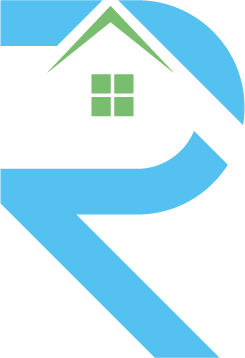Choose Your Mortgage Payment Option
Apply NowAlternatives for Paying Your Mortgage
How you will handle your mortgage payments is a critical factor to take into account while starting the route to homeownership. Choosing the right payment plan based on your financial circumstances might have a big influence on how you like being a homeowner.
Here are the most prevalent mortgage payment alternatives:
- Monthly principal and interest payments represent the most common mortgage payment method. Under this arrangement, you commit to paying a fixed amount each month, but the composition of that payment evolves over time.
- Over the course of your mortgage, the proportion allocated to principal gradually increases, while the portion allocated to interest gradually decreases.
- Bi-weekly payments, as an alternative, require you to make your monthly payments every two weeks rather than once a month.
- This arrangement can lead to the equivalent of an extra monthly payment annually, potentially helping you pay off your mortgage faster and save on interest.
- In the interest-only payments you are required to pay only the interest on the loan for a specified period ( 5-10 years).
- After that you have to start paying both principal and interest. This will provide lower initial payments but higher payments later on.
- Accelerated bi-weekly payments take your monthly mortgage and divide it by two.
- These payments are withdrawn from your bank account every two weeks, still totaling 26 payments annually.
- The key difference is that each accelerated bi-weekly payment is slightly higher than a regular bi-weekly payment.
- Accelerated weekly payments involves dividing your monthly mortgage payment by four.
- These payments are withdrawn from your bank account every week, which results in a total of 52 payments annually, with payments made every week.
The borrower makes two payments per month (on specific dates), for a total of 24 installments annually. While many borrowers’ pay schedules are compatible with this payment choice, it doesn’t provide the same acceleration advantages as bi-weekly or weekly installments.
Some mortgage agreements allow for occasional lump-sum payments. These payments can be made at any time during the year and are applied directly to the principal.
- Lump-sum payments can lower the overall interest paid on the loan. And you can make these payments when it is financially convenient.
- The negative side of this payment is that lenders may restrict the number of lump-sum payments allowed per year. And there may be penalties or restrictions for this type of payment.
- You can make additional payment toward your mortgage principal other than regular monthly payments. These extra payments reduce your loan balance faster.
- It can shorten the loan term and save on interest costs. And allows flexibility to pay extra when your finances permit.
- If you want to build your equity faster and pay off your mortgage early, this option works well with any mortgage type.
- Most mortgages offer payment frequency options, which allow you to choose between monthly, biweekly, or accelerated bi-weekly payments
- It aligns with your income schedule and budgeting preferences.
Increasing the quantity of your regular monthly or recurring payments is part of his strategy. You might speed up the repayment of the loan’s principle by continuously making more than the minimum payment due. By doing this, you can decrease the loan’s term and pay less interest overall. Your typical payment schedule includes an increased regular payment; it is not an additional or irregular payment.
At certain seasons of the year, borrowers may choose to double their regular monthly payment. This strategy can greatly quicken the repayment of the mortgage.
Prepayments (additional payments) are frequently permitted by mortgage agreements without incurring fees. These prepayments might speed up mortgage repayment by being put straight to the principal balance.repayment.

Choosing the right mortgage payment option depends on your financial goals, risk tolerance, and current financial situation. It is essential to carefully evaluate or analyze your options and consider consulting with mortgage professional to determine the payment plan that best aligns with your homeownership objectives.
Factors that affect your mortgage payment option

- Consider your current and expected future financial stability.
- Determine your financial goals, such as building equity quickly, paying off the mortgage early, or having lower initial payments.
- Asses the current interest rate environment. If the rates are low, fixed-rate mortgages may be attractive, while rising rates might make ARMs less appealing.
- Think about how long you stay in the home. Shorter stays may favor lower initial payment option
- Evaluate your risk tolerance and comfort level with fluctuating payments if considering adjustable-rate or interest-only mortgages.
- Discuss available mortgage payment options with your lender or mortgage broker. Different lenders may have unique programs and terms.
Borrowers should carefully weigh their available mortgage payment options and pick the one that best fits their needs and circumstances. While some alternatives offer budgeting flexibility, others can assist lower the total amount of interest paid and shorten the mortgage term. Additionally, borrowers should read their mortgage contract carefully to comprehend any particular clauses pertaining to prepayment penalties, payment options, and other issues. Feel free to contact me to explore your mortgage choices.
